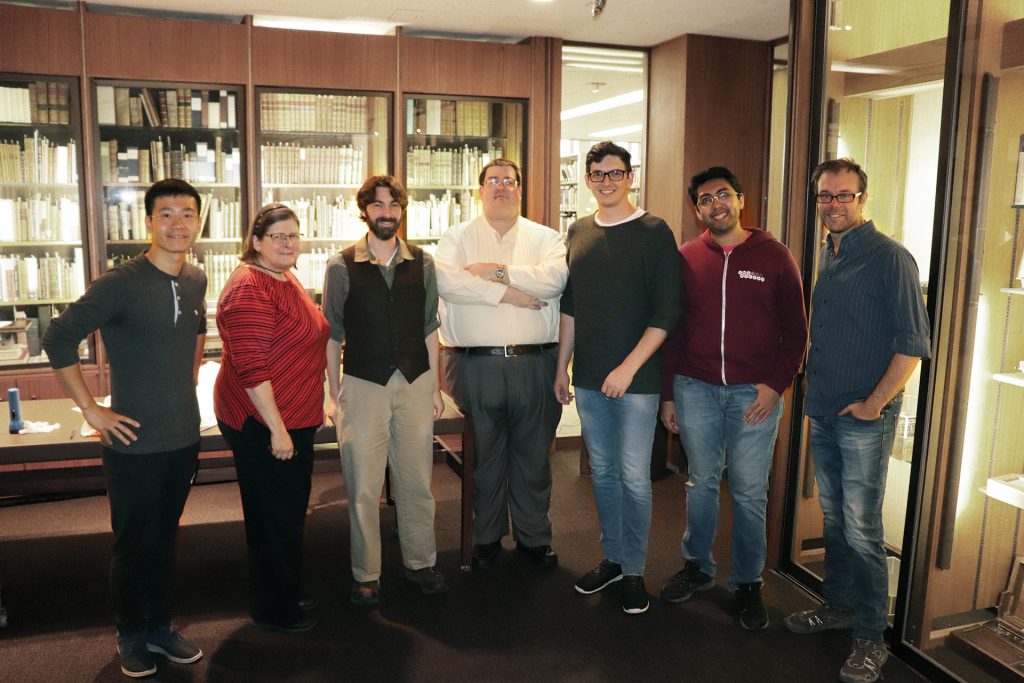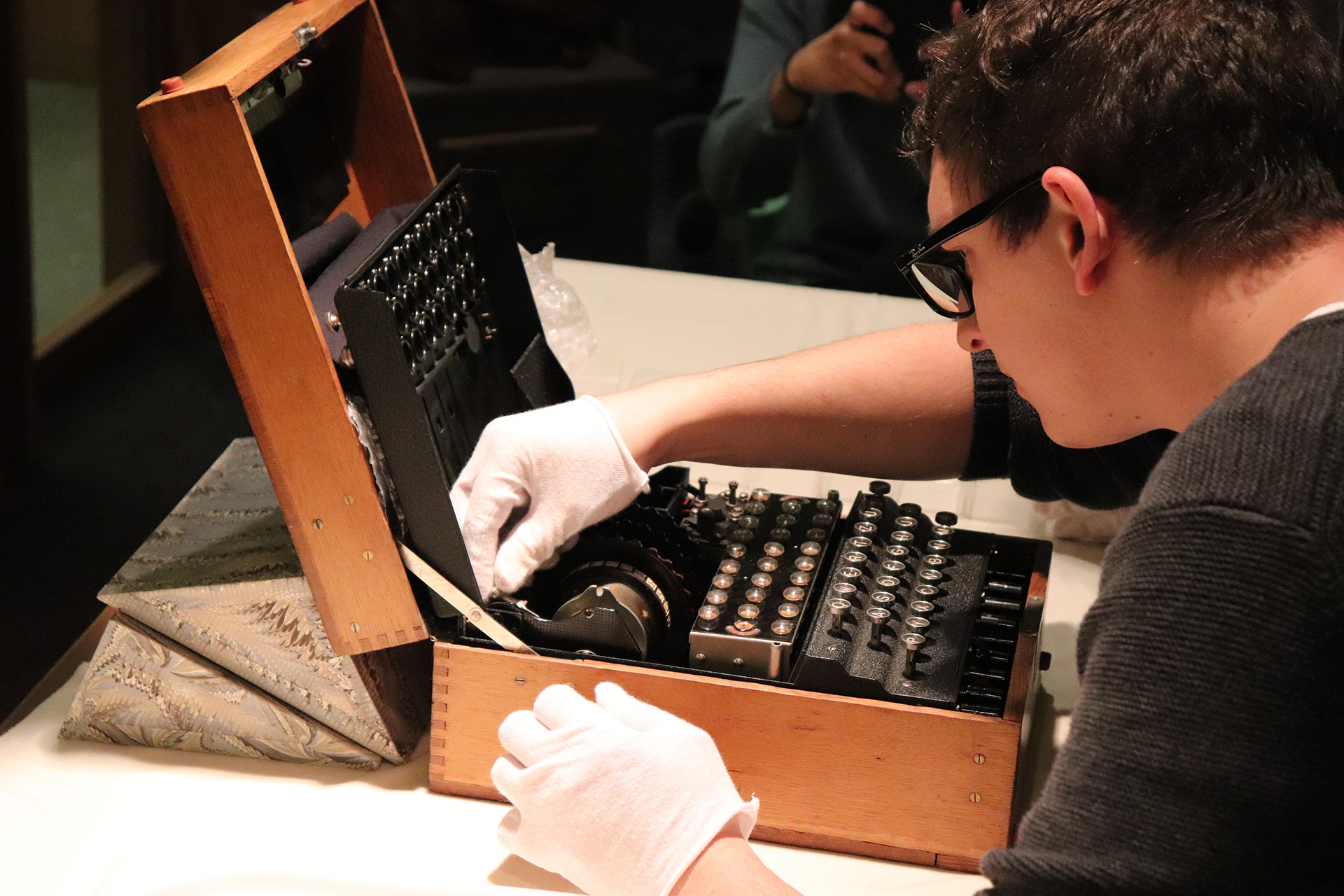Today, I was part of a VERY rare event at the CMU Library. We (the FigLab team) were invited to the Fine and Rare Book Room (Hunt Library, 4th floor, CMU) to take on a major task – the disassembly of two Enigma machines. Since the machine is of extreme historical value, nobody should even disassemble an Enigma just for the sake of doing so. However, here we were presented with a necessity to disassemble them to understand the history of the machines.
Both machines became into the possession of the CMU Library as a gift. However, they came with little knowledge of their prior whereabouts. For the historians at the CMU Library, that is a no-go. History is meant to be preserved and untouched but also to be explored to uncover the past. For this rare reason, we were asked to open two old Enigmas as the important parts of every Enigma is stamped with the serial number and the production stamp. Depending on the Enigma configuration, each of the 3 to 8 rolls is marked, the reflector at the end of the role is marked, and the Enigma housing itself is also marked.
Me while performing the first baby steps to understand the complexity of the Enigma machine. While a manual helps to get the first idea of how to open an Enigma, there are dozen of variations of the Enigma machine, and the fact that it is possible that no one opened the machine for over 70 years makes the task not easier. Thus, instinctive feeling, care, and patience were needed to get the rotors out of the rotor mount, see:
After almost 4 hours of careful disassembling the machines, we pieced one back together while leaving one open to display the internals to the public. While this was one goal of the operation, the second was to understand which model and serial number each of the machines have. We are at this point certain about the serial number and that the ones in possession of CMU Library are an Enigma I and Enigma M4. However, this was a massive undertaking and only came together with the combined team effort.

Team: Mary Kay Johnsen, Andrew Meade McGee, Scott Weingart, Chris Harrison, Yang Zhang, Karan Ahuja, and myself.
Chris described his experience afterwards as:
Unforgettable experience doing a forensic teardown of two #enigma machines. More research to be done, but almost positive we have an wartime Enigma I and early M4. Big thanks to @CMULibraries, Mary Kay Johnsen @cmuRareBooks & Andrew Meade McGee. @cmuhcii @CarnegieMellon @SCSatCMU pic.twitter.com/lLTFUG2zEU
— Chris Harrison (@hciprof) October 8, 2019
Further External Links to the CMU Library post conceining the event: Blog, Twitter, Facebook, Instagram

Comments are closed.